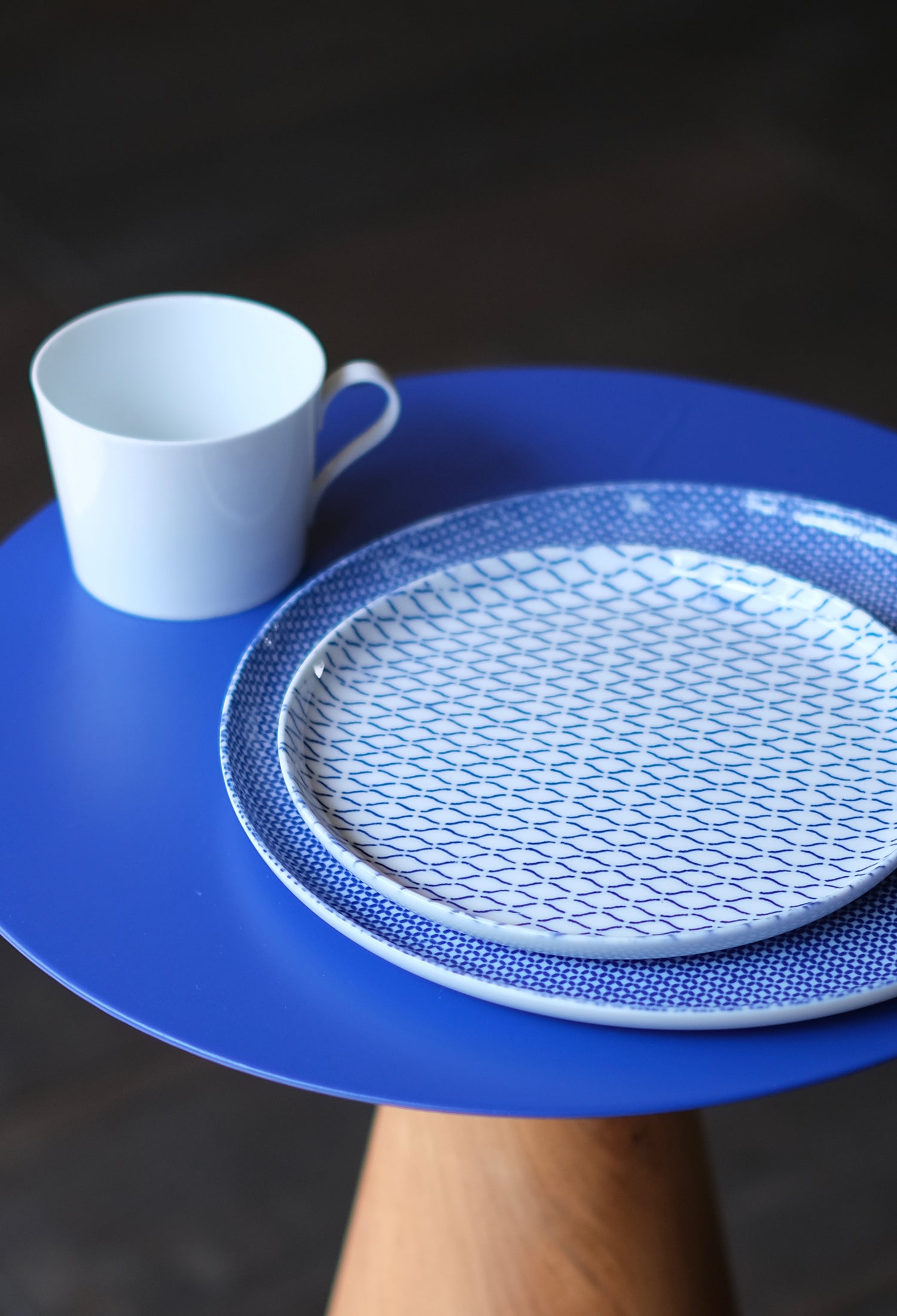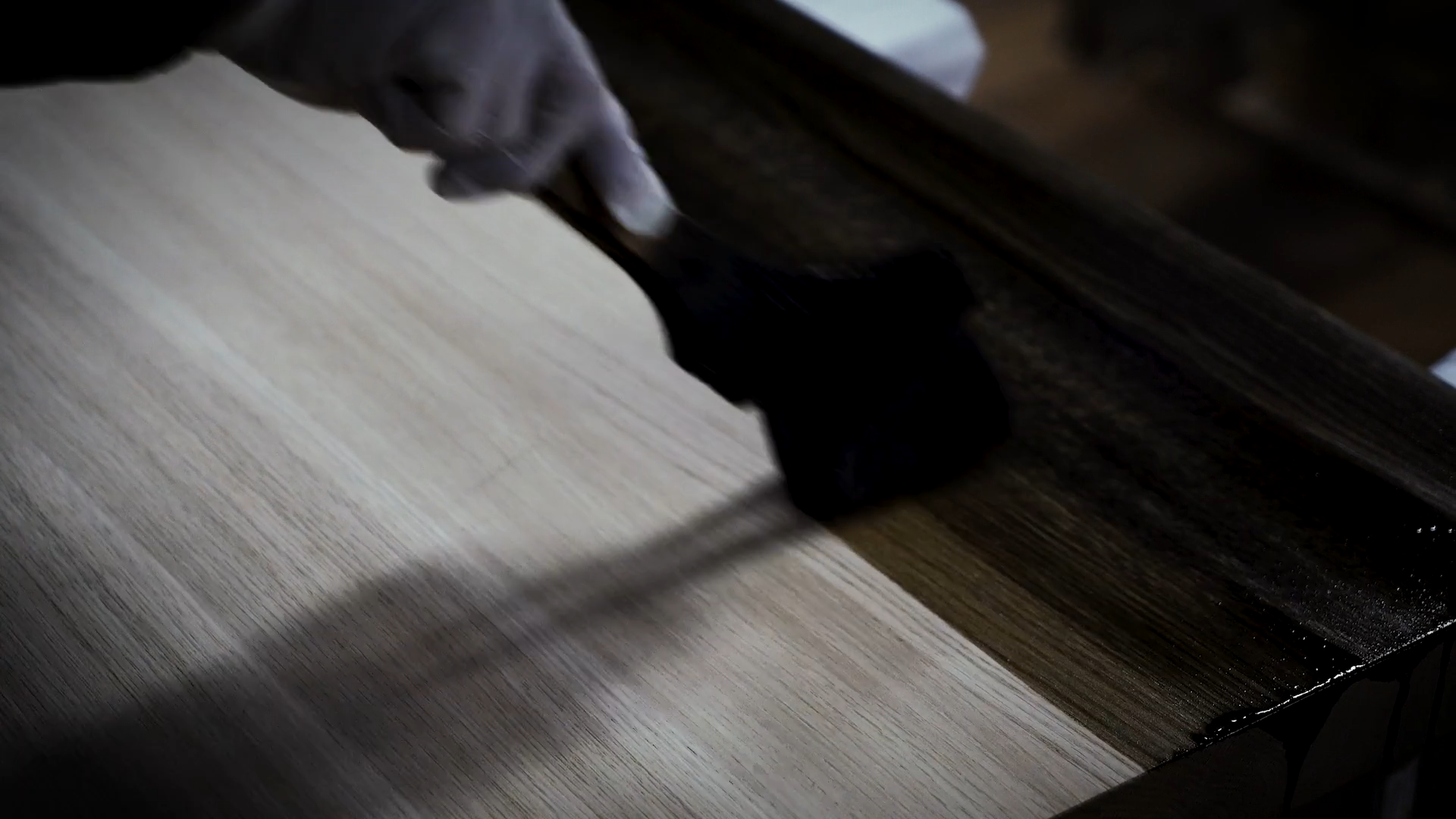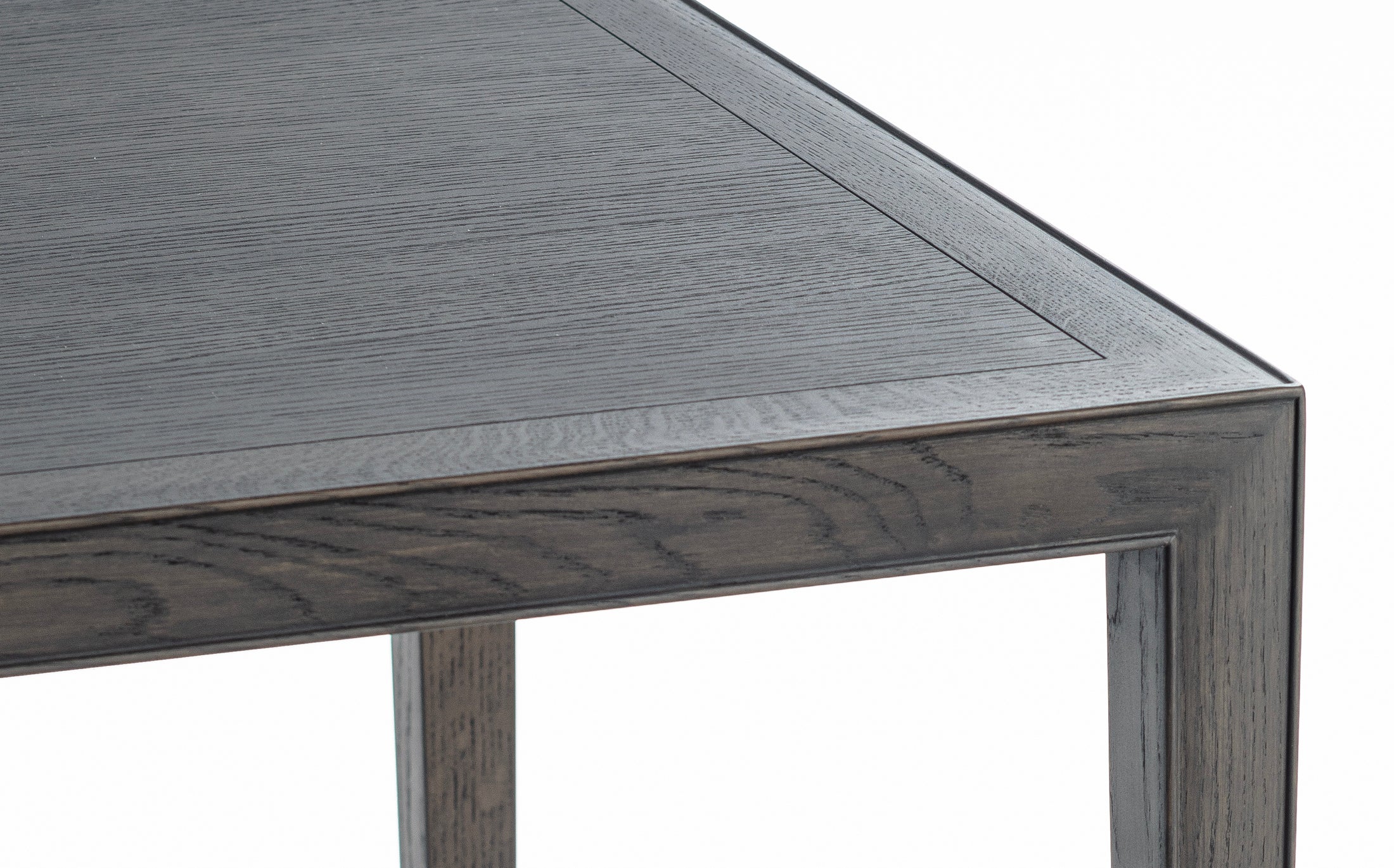MATERIALS AND CARE - 木製品
石鹸を主成分としたソープフィニッシュは、自然素材による安心・安全な仕上げです。オイルやワックス仕上げとは異なり、木に塗布しても濡れ色にならず木本来の風合いを維持します。気持ちのよい、サラッとした手触り感です。
木肌に石鹸の脂肪分が染み込むことで汚れが落ちやすく、乾燥を促進する有害な化学物質は一切使われていないので、お子様のいるご家庭でも安心な仕上げです。木材の割れや反り、または汚れや手垢などの付着を防ぐものではありません。
取り扱い
・家具の設置は、木材の割れや反りの原因となる放熱器具の近くや空調機器の吹出口付近、直射日光(紫外線)の当たる場所はなるべく避けてください。
・汚れの付着を完全に防ぐことはできません。汚れや手垢が付いた場合はメンテナンスを行ってください。(推奨:WENNEXのC液をご使用ください。)
・他の仕上げに比べて撥水性が低く、水拭きによって表面の毛羽立ちやガサつきが起こる可能性があります。その際は、サンドペーパーで研磨をし、A液とB液を順番に塗布してください。基本的には、水拭きではなく、乾拭きをしてください。
お手入れ
[推奨製品] WENNEX(ヴェネックス) ソープフィニッシュ(A・B・C 液)
1. 汚れが表面にある場合は、C液をご使用ください。スポンジなどにC液を十分に吸い込ませた上で、汚れを洗い落してください。表面に残ったC液はスポンジで吸い取ります。
2. 予めサンドペーパー(#180)で表面をやすり、下地を仕上げます。研磨粉はきれいなウエスなどで取り除いてください。
3. A液をスポンジまたは刷毛などで表面に塗布します。A液には石鹸塗装の基礎となる洗剤成分が入っています。液たまりができるとシミになるので、余分な液体は丁寧にウエスで拭き取ってください。2時間ほど乾燥させ、サンドペーパー(#400)で毛羽立ちを取り除き、研磨粉はきれいに拭き取ってください。
4. 最後にB液をA液と同様に塗布します。B液には仕上げとなる油分成分が入っています。液たまりができるとシミになるので、余分な液体は丁寧にウエスで拭き取ってください。2時間ほど乾燥させ、サンドペーパー(#1000)で表面の毛羽立ちを取り除き、研磨粉を拭き取って完了。
部分的にメンテナンスを行うと、その箇所が白くなり、ムラが目立ちます。全体的にメンテナンスを行うか、部分的にお手入れをする場合には、ムラができることをご了承の上、行ってください。
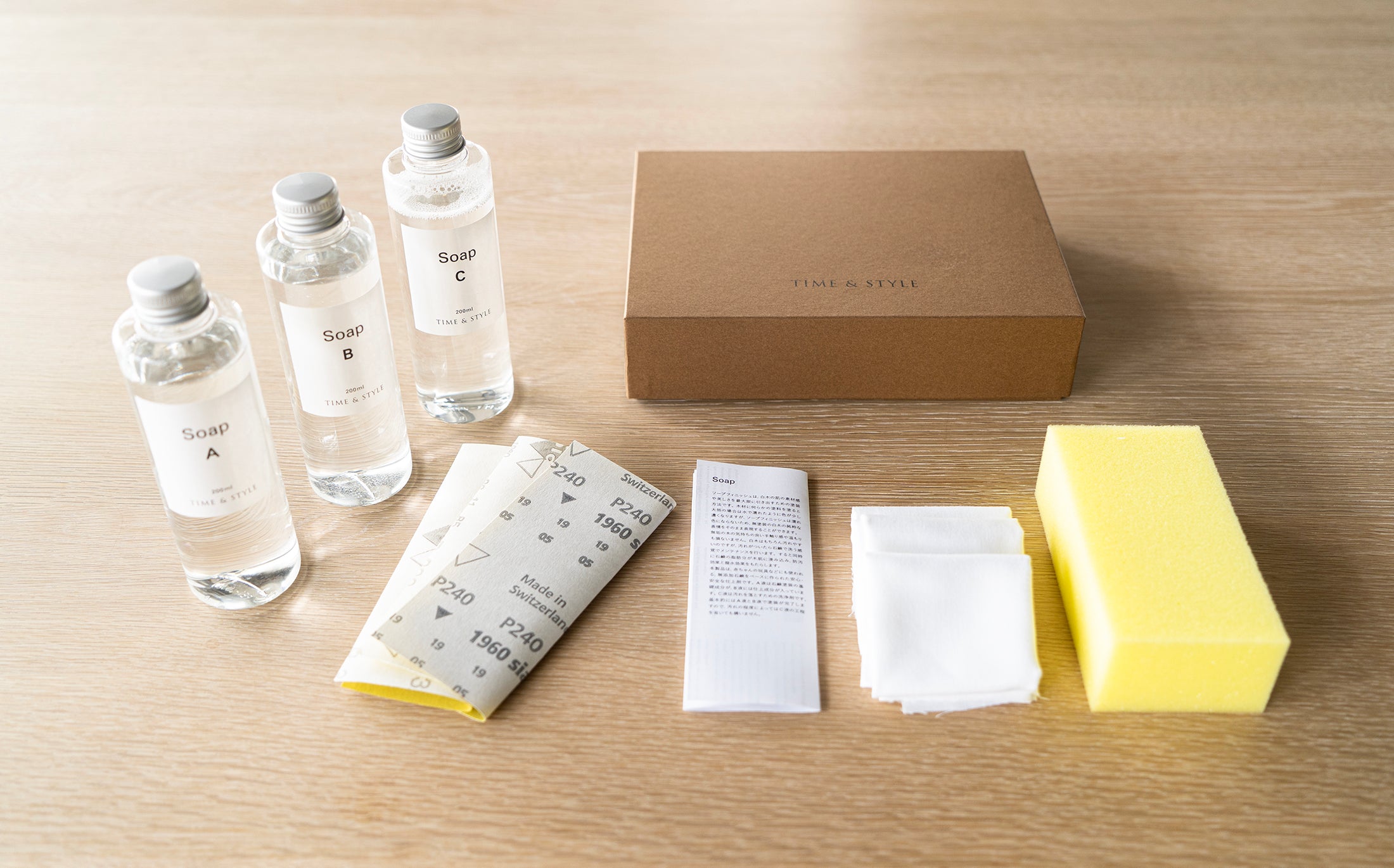
How to use
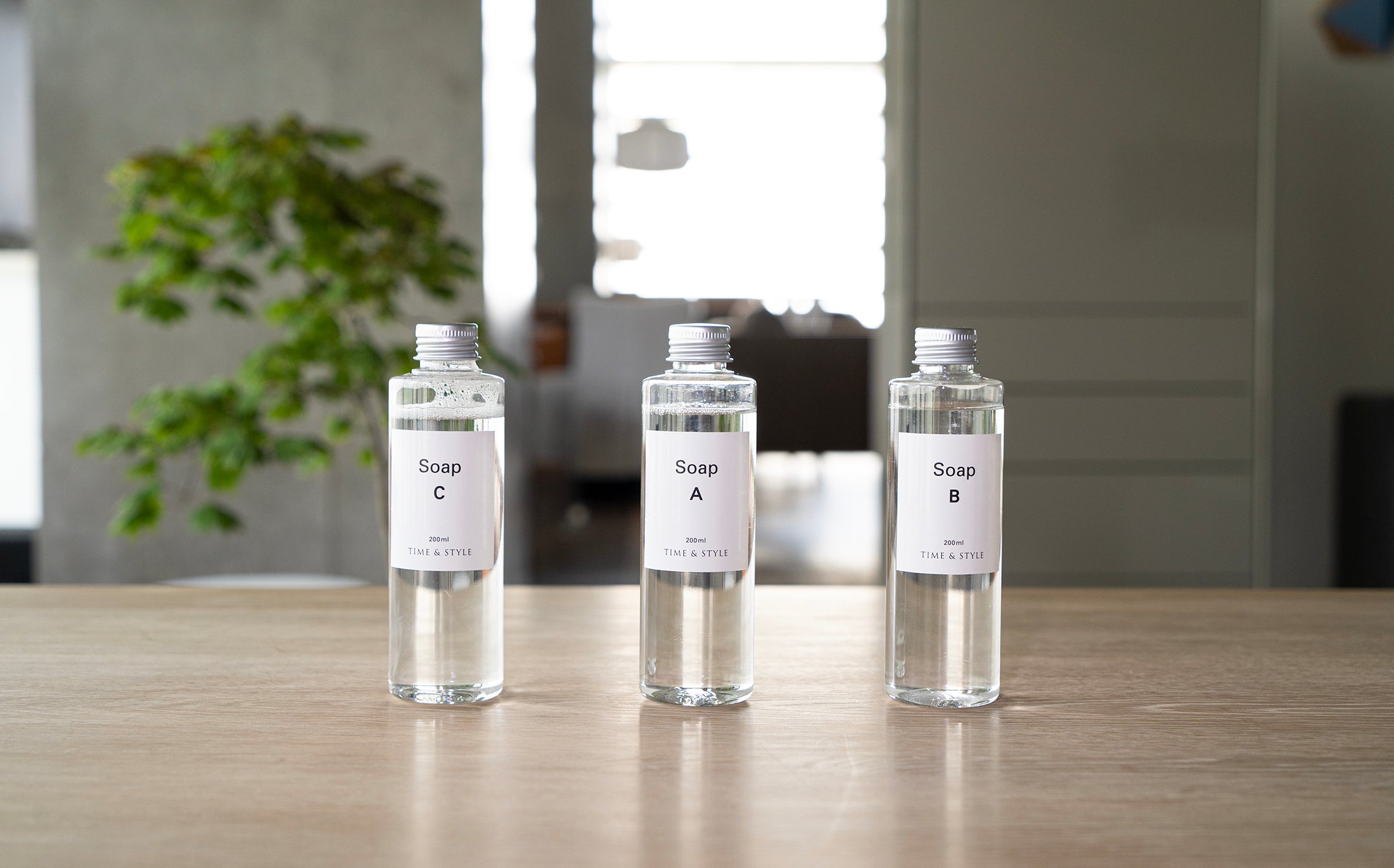
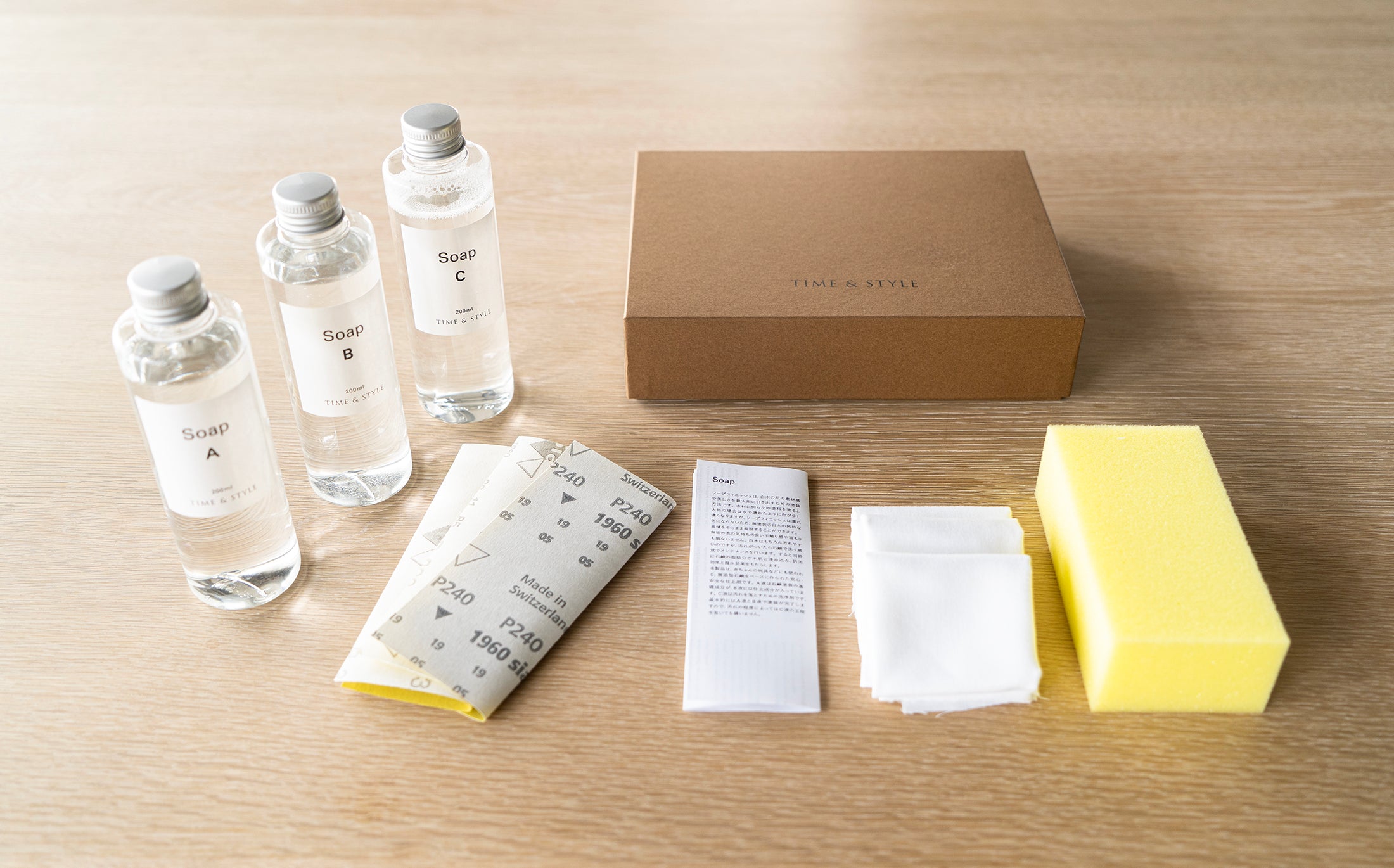
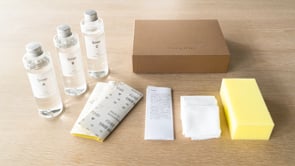
北海道で生産されたヒマワリ油と国産蜜蝋を配合した完全無添加の仕上材です。安心・安全な仕上げを家具に使用するために、オリジナル開発を行いました。
ヒマワリ油が木材に浸透することで乾燥を防ぎ、蜜蝋が木材の表面にとどまることで防水・防汚効果をもたらします。ウレタン塗装のように表面に樹脂膜を作らないので、木の素材感や手触りを保ち、年月を重ねるほどに風合いが増してゆきます。定期的にビーズワックスを塗布するお手入れによって、永くご愛用いただける仕上げです。
取り扱い
・家具の設置は、木材の割れや反りの原因となる放熱器具の近くや空調機器の吹出口付近、直射日光(紫外線)の当たる場所はなるべく避けてください。
・熱い鍋や水気のあるグラスなどを直接置くと、しみの原因となります。コースターやランチョンマット、鍋敷きなどをご使用ください。
・水拭きをすると表面のビーズワックスが拭き取られます。頻繁に水拭きをする場合は、お手入れの頻度を増やしてください。
・ビーズワックス塗布後はしっかりと拭き取ってください。拭き残りがあると、洋服や書類、本に油染みがつく恐れがあります。
・お手入れ用のビーズワックスは季節や湿度によって硬さが変わり、成分が分離することがあります。硬くなったり、分離した場合は、湯せんをしてヘラなどで混ぜてからご使用ください。
・ビーズワックスにはアレルギー特定原材料等25 品目は含まれておりません。
・ビーズワックスは完全無添加の天然原料を使用しておりますが、誤って目や口に入った場合や皮膚等に異常があらわれた場合は、念のため本製品を持参して医療機関で受診してください。
お手入れ
1. サンドペーパー(#240~#320)で木目に沿って軽くやすりがけをします。
2. 固く絞った布巾で、表面の汚れやホコリを拭き取ります。
3. 家具の表面が乾燥したら、スポンジに適量のビーズワックスをつけ、木目に沿って塗りこみます。
4. 家具の表面の余分なビーズワックスは、柔らかい布で丁寧に拭き取り、磨きあげます。この時に、ビーズワックスを均一に伸ばすようにして、拭き上げてください。
すぐにご使用いただけますが、半日~1日おくと、ビーズワックスがより定着します。
1-4を定期的(通常期4~11月ごろは月に1度、乾燥期12~3月は週に1度)に行うとビーズワックスが定着し、より一層安定的な効果が期待できます。特にご購入当初はこまめなお手入れをお勧めします。無垢材の割れや反りの防止につながります。
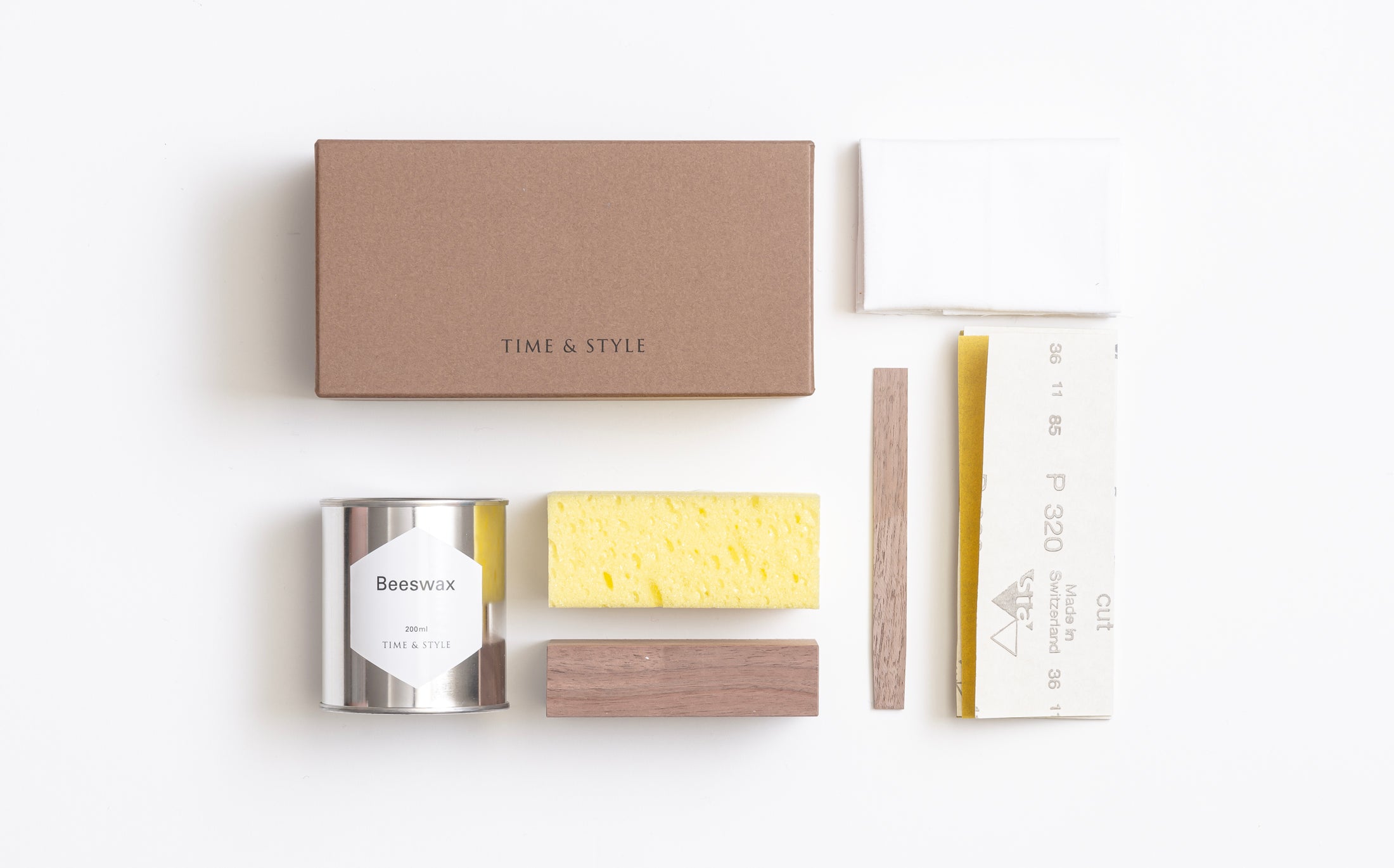
How to use
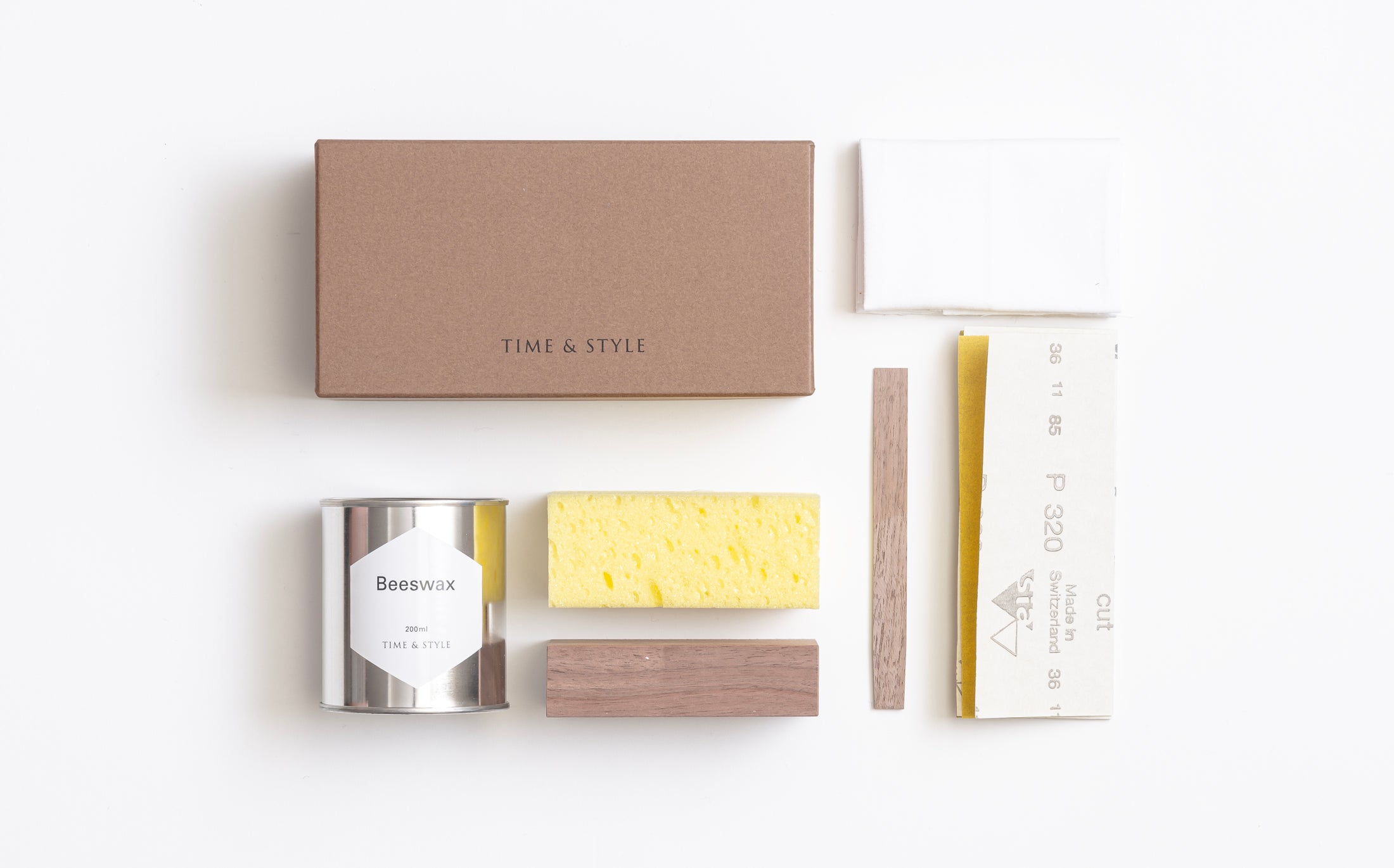
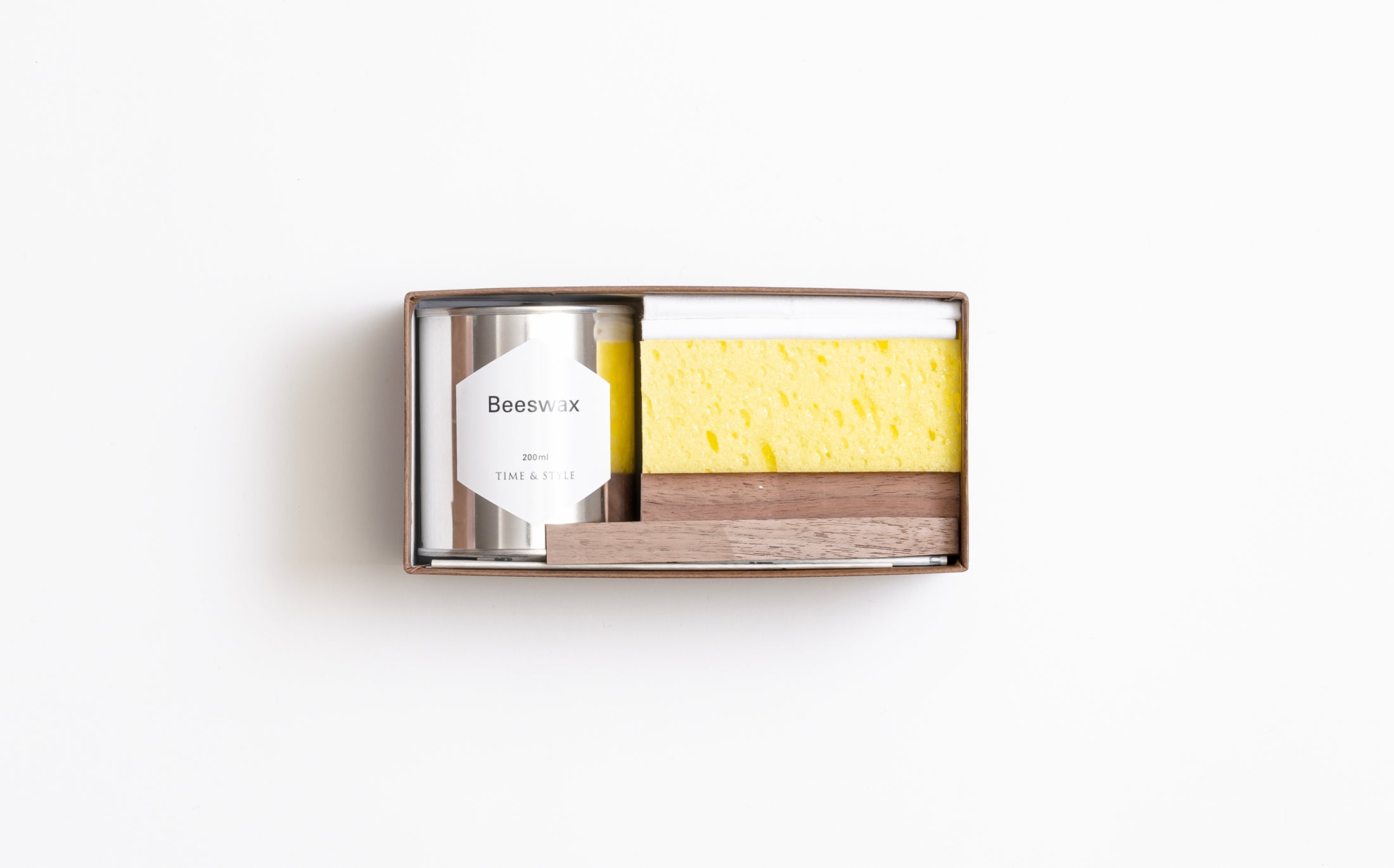
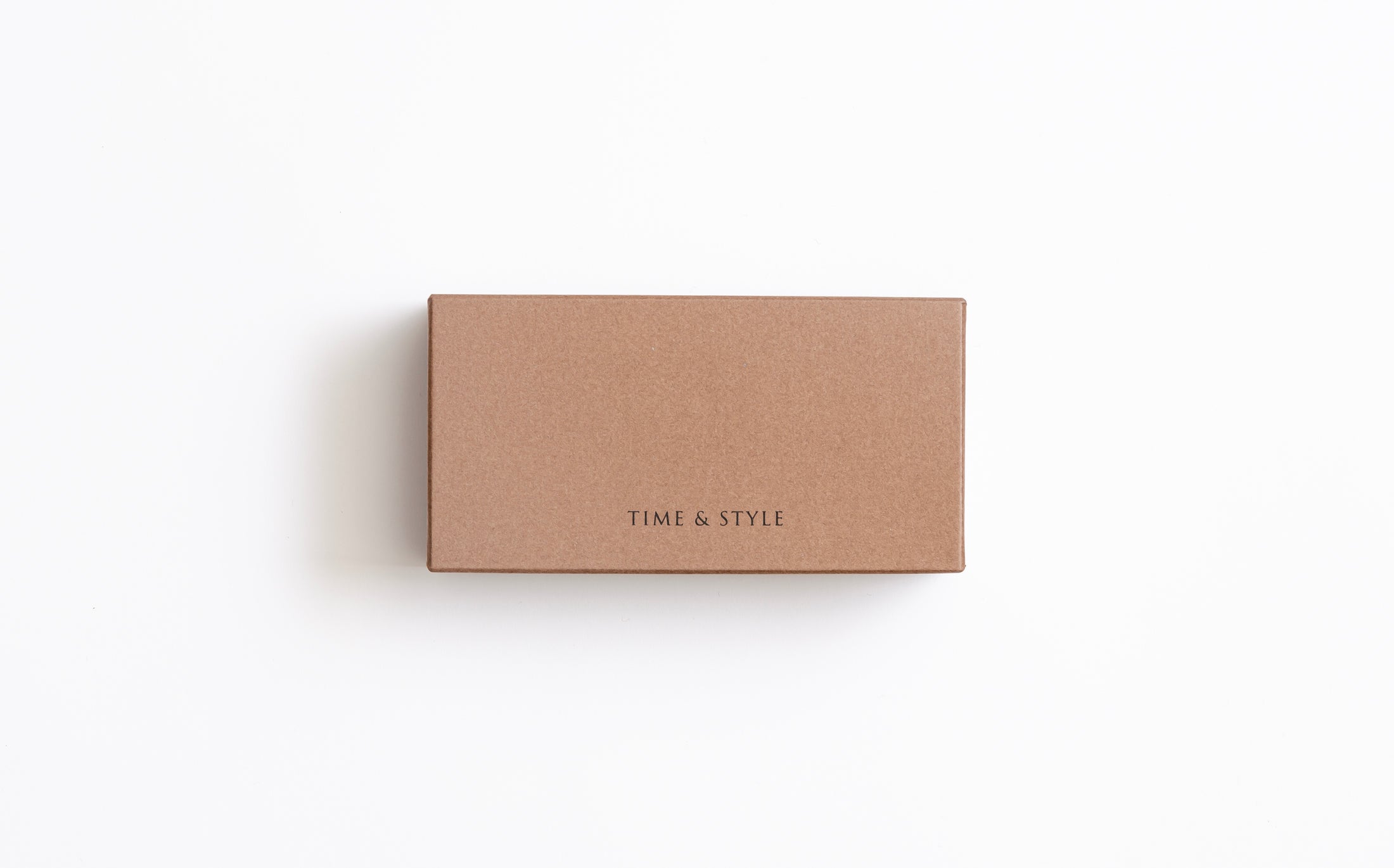
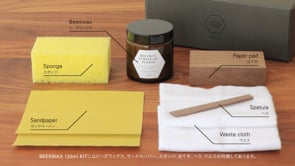
ナラ材に鉄分が触れると、木材に含まれるタンニンと化学反応を起こして黒色に変化します。この特性を生かして、ナラ材を自然に黒色に変色させたものが「鉄水仕上げ」です。顔料や染料で表面を塗装する仕上げとは違って、木目の風合いが感じられる豊かな表情が特徴です。
鉄水は衣類や繊維用の染色剤として使用されるのが一般的ですが、家具用の仕上げとしてオリジナル開発しました。それぞれのナラ材によってタンニンの含有量が異なるので、色合いに個体差が生じます。また、経年変化によって、黒色が徐々に薄く変化していきます。鉄水を塗布した後は、ビーズワックスで仕上げています。
取り扱い
・酸性の液体を付着させないようにしてください。レモンやライムなど酸性の強い液体が付着すると変色や退色の原因となります。
・家具の設置は、木材の割れや反りの原因となる放熱器具の近くや空調機器の吹出口付近、直射日光(紫外線)の当たる場所はなるべく避けてください。
・熱い鍋や水気のあるグラスなどを直接置くと、しみの原因となります。コースターやランチョンマット、鍋敷きなどをご使用ください。
・金属アレルギーをお持ちの方は、アレルギー反応が出る場合があります。
・鉄水は特有の匂いがする場合があります。匂いが強い場合には、窓を開けるなど換気を心掛けてください。時間の経過とともに軽減します。
・表面の最終仕上げにはビーズワックスを塗布しています。水拭きをすると、表面のビーズワックスが次第に拭き取られていきます。頻繁に水拭きをする場合には、お手入れの頻度を増やしてください。
お手入れ
1. 固く絞った布巾で、表面の汚れやホコリを拭き取ります。
2. 家具の表面が乾燥したら、スポンジに適量のワックスをつけ、木目に沿って塗りこみます。
3. 家具の表面の余分なワックスは柔らかい布で丁寧に拭き取り、磨きあげます。この時に、ビーズワックスを均一に伸ばすようにして、拭き上げてください。
すぐにご使用いただけますが、半日~1日おくと、ビーズワックスがより定着します。
1-3を定期的(通常期4~11月ごろは月に1度、乾燥期12~3月は週に1度)に行うとビーズワックスが定着し、より一層安定的な効果が期待できます。特にご購入当初はこまめなお手入れをお勧めします。無垢材の割れや反りの防止につながります。
表面を紙やすりで強く研磨すると、黒色に変化した木部も研磨されて木の素地が出てきます。表面に毛羽立ちがある場合には、#400以上の細かいサンドペーパーを使用して、優しく研磨し、最後にビーズワックスを塗布してください。
ウレタン塗装仕上げは、木材表面にウレタン樹脂の塗膜を施す仕上げで、湿気や紫外線などから木材を保護し、割れや反りなどの変化を抑えます。
木材の導管を塗りつぶさないオープンポアタイプのウレタン塗装を採用し、木材の質感を生かした仕上げにしています。他の仕上げと比較すると、水分や熱の影響を受けにくいため、木材の変化が少なく安定した状態でご使用いただけます。日常的なお手入れは、水拭きや家具用洗剤をお使いください。塗装が剥がれたり、紫外線の影響などで変色や剥離が起きた場合は、メンテナンス用のペンなどを使った簡易的な補修が可能です。
 |
 |
 |
 |
| Natural White | Snow White | Medium Grey | Charcoal Grey |
取り扱い
・熱いものを直接置くと塗膜や木材が変色、変形する場合がありますので、コースターやランチョンマット、鍋敷き等をご使用ください。
・研磨成分や化学成分が入った布巾はご使用にならないでください。変色や剥離の原因となります。
・化学雑巾を接触させたまま長時間放置したり、滑り止めマット(ポリ塩化ビニル製) や耐震用ジェルなどを使用すると、変色したり塗膜がはがれる場合があります。
・シンナーやアルコール、ベンジン、除光液、除菌用消毒液などは、表面の塗膜を傷めますのでご使用にならないでください。
・アルカリ性や酸性の洗浄液やクリーナーのご使用は控えてください。
・経年によって表面のツヤが増す場合があります。
・経年劣化や衝撃により塗膜が剥離する場合があります。
お手入れ
・乾拭き、または固く絞った布で拭いてください。
・水拭きをした際は、最後に必ず乾拭きをしてください。使用する布巾によっては繊維が引っかかり、木材の表面に毛羽立ちが発生する場合があります。特に化学繊維の布巾のご使用は避けてください。
・油汚れ等が付着した場合は、薄めた中性洗剤(3~5%)に浸した布巾で汚れを落としてください。その後、固く絞った布巾で水拭きをし、水滴が残らないように乾拭きをしてください。
